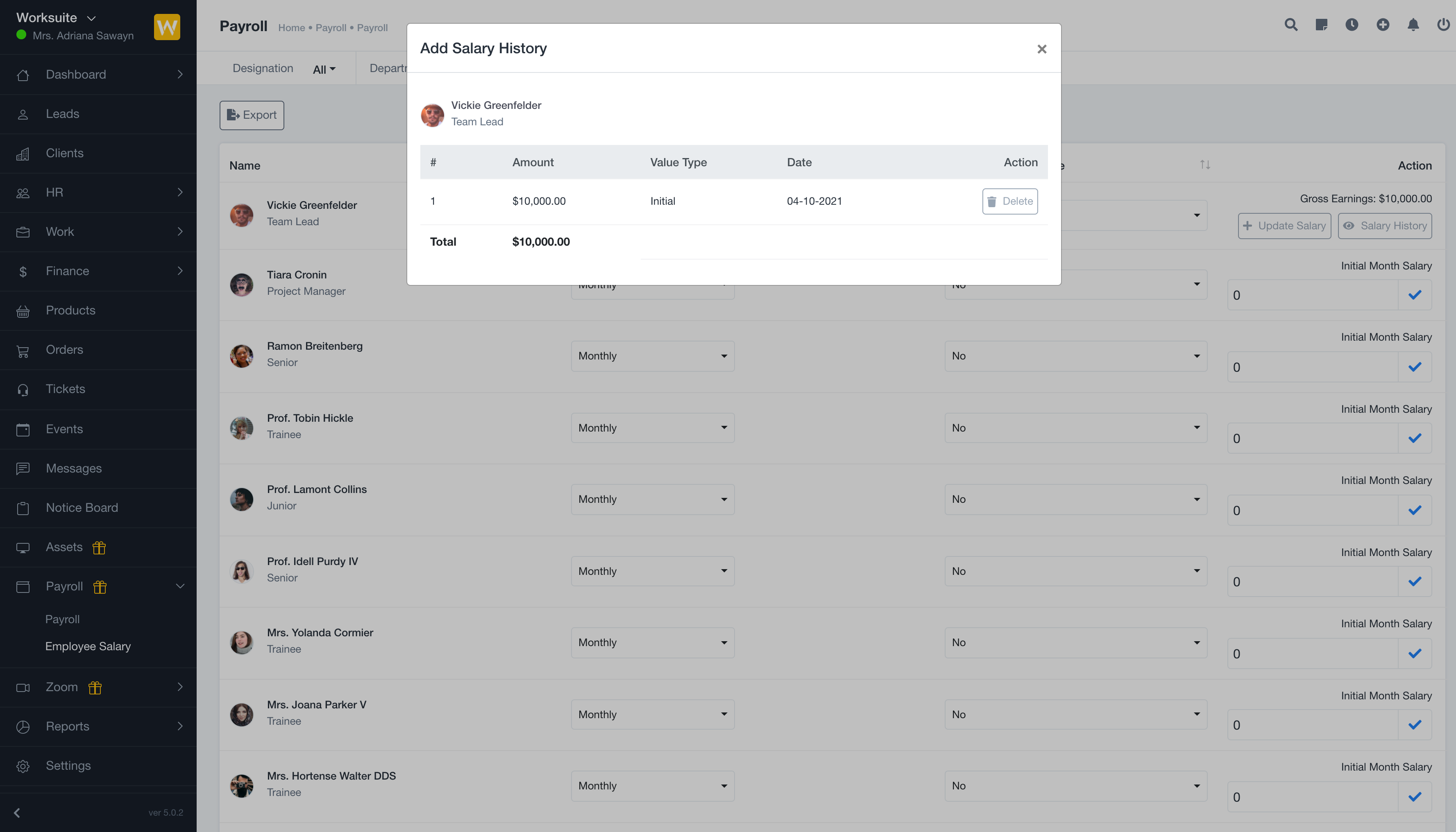Welcome to the realm of CRM payroll, where the convergence of customer relationship management (CRM) and payroll systems orchestrates a symphony of efficiency and empowerment within the HR landscape. This innovative fusion offers a multitude of benefits, streamlining payroll processes, enhancing data security, empowering employees, and driving cost savings.
Let’s delve into the captivating world of CRM payroll, exploring its intricacies and unraveling its transformative potential.
By seamlessly integrating CRM and payroll systems, organizations can harness the power of centralized data, automated workflows, and enhanced employee self-service capabilities. This integration not only optimizes payroll operations but also empowers employees to actively manage their own payroll information, fostering a sense of ownership and satisfaction.
CRM Integration

Integrating customer relationship management (CRM) and payroll systems offers numerous advantages for businesses seeking to streamline their operations and improve efficiency.
By connecting these systems, organizations can automate payroll processes, reduce manual errors, and gain a comprehensive view of employee data.
Benefits of CRM-Payroll Integration
- Automated payroll processing:Integration enables automatic transfer of employee data from CRM to payroll, eliminating manual data entry and reducing errors.
- Real-time data synchronization:Changes made in either system are reflected in both, ensuring data accuracy and consistency.
- Improved employee data management:Centralized storage of employee information in a single system provides a holistic view of employee data, facilitating HR and payroll management.
Challenges and Best Practices
While CRM-payroll integration offers significant benefits, it also presents challenges that require careful consideration.
- Data security:Ensuring the security of sensitive employee data during integration is crucial.
- System compatibility:Compatibility issues between different CRM and payroll systems can hinder integration efforts.
- Employee training:Training employees on the integrated system is essential for smooth adoption and effective utilization.
To mitigate these challenges, businesses should adopt best practices such as:
- Conducting thorough due diligence to select compatible systems.
- Establishing clear data security protocols.
- Providing comprehensive training to employees.
- Regularly monitoring and evaluating the integrated system to ensure optimal performance.
Payroll Management

Integrating payroll management into a CRM system offers several advantages, including automation, efficiency, and enhanced employee self-service capabilities.
Automating Payroll Tasks
- Streamline payroll processing by automating calculations, deductions, and tax filings.
- Reduce errors and ensure accuracy through automated data validation and verification.
- Save time and resources by eliminating manual data entry and reducing the need for manual intervention.
Improving Efficiency
- Centralize payroll data within the CRM, providing a single source of truth for employee information.
- Improve communication and collaboration between HR, finance, and payroll teams.
- Gain real-time visibility into payroll costs and employee compensation.
Enhancing Employee Self-Service, Crm payroll
- Empower employees with self-service portals to view pay stubs, update personal information, and manage benefits.
- Reduce the workload of HR and payroll departments by allowing employees to access and update their own information.
- Improve employee satisfaction by providing convenient and easy-to-use self-service options.
Data Security and Compliance
Data security and compliance are critical aspects of CRM-payroll systems. Payroll data is highly sensitive, and protecting it is essential to maintain employee trust and avoid legal consequences.
Regulations and standards such as the Payment Card Industry Data Security Standard (PCI DSS) and the General Data Protection Regulation (GDPR) impose strict requirements on the secure handling of payroll data. These regulations mandate the implementation of robust security measures to protect data from unauthorized access, disclosure, or alteration.
Best Practices for Protecting Sensitive Payroll Information
- Encryption:Encrypt payroll data both at rest and in transit to prevent unauthorized access.
- Access Control:Implement strict access controls to limit who can access payroll information. Use role-based permissions and two-factor authentication.
- Regular Security Audits:Conduct regular security audits to identify and address any vulnerabilities.
- Employee Training:Educate employees about the importance of data security and their role in protecting it.
- Incident Response Plan:Develop a comprehensive incident response plan to address data breaches and other security incidents.
Reporting and Analytics
CRM-payroll systems provide comprehensive reporting and analytics capabilities to monitor payroll performance and make informed decisions.
With these systems, businesses can generate a wide range of reports, including:
- Payroll summaries
- Time and attendance reports
- Employee earnings statements
- Tax and deduction reports
These reports provide detailed insights into payroll expenses, employee compensation, and compliance.
Data Analysis
CRM-payroll systems also offer advanced analytics tools that allow businesses to identify trends, patterns, and anomalies in payroll data.
By analyzing payroll data, businesses can:
- Identify areas of overspending or underpayment
- Optimize payroll processes to reduce costs and improve efficiency
- Make data-driven decisions to improve employee compensation and benefits
Employee Self-Service
Employee self-service (ESS) portals empower employees to manage their payroll information and other HR-related tasks independently. These portals offer a range of benefits that can significantly enhance employee satisfaction and streamline payroll processes.
ESS portals allow employees to:
- View and download pay stubs
- Update personal information
- Manage benefits
- Request time off
- Submit expense reports
- Access training materials
By providing employees with self-service capabilities, organizations can reduce the workload of HR and payroll departments, allowing them to focus on more strategic initiatives. ESS portals also enhance employee satisfaction by giving employees greater control over their payroll information and HR-related tasks.
Improved Employee Satisfaction
ESS portals can significantly improve employee satisfaction by providing them with the following benefits:
- Convenience:Employees can access their payroll information and manage HR-related tasks anytime, anywhere, without having to contact HR or payroll departments.
- Control:Employees have greater control over their payroll information and can make changes as needed.
- Accuracy:Employees can ensure that their payroll information is accurate and up-to-date.
- Transparency:Employees can view their payroll history and understand how their pay is calculated.
Cost Savings and ROI

Integrating CRM and payroll systems offers significant cost savings and return on investment (ROI) for businesses. By automating manual processes, eliminating data entry errors, and streamlining workflows, CRM-payroll integration can reduce operating expenses and improve overall efficiency.
One of the primary cost savings associated with CRM-payroll integration is the reduction in labor costs. Manual payroll processing is a time-consuming and error-prone task that can be significantly reduced through automation. CRM-payroll systems automate tasks such as payroll calculation, tax withholding, and direct deposit, freeing up HR staff to focus on more strategic initiatives.
Improved Data Accuracy
In addition to reducing labor costs, CRM-payroll integration also improves data accuracy. By eliminating manual data entry, businesses can reduce the risk of errors that can lead to costly mistakes. Accurate data is essential for ensuring that employees are paid correctly and on time, as well as for compliance with tax and labor laws.
Increased Employee Satisfaction
Another benefit of CRM-payroll integration is increased employee satisfaction. When employees have access to self-service portals where they can view their pay stubs, request time off, and make changes to their personal information, they feel more empowered and engaged. This can lead to improved morale and reduced turnover, which can further contribute to cost savings.
Enhanced Reporting and Analytics
CRM-payroll integration also provides businesses with enhanced reporting and analytics capabilities. By combining data from both systems, businesses can gain a more comprehensive view of their workforce, identify trends, and make better decisions about resource allocation and employee compensation.
Long-Term Benefits and Sustainability
The benefits of CRM-payroll integration are not just short-term. By investing in a CRM-payroll system, businesses can reap the rewards of increased efficiency, cost savings, and improved employee satisfaction for years to come. The long-term sustainability of CRM-payroll investments makes them a wise choice for businesses looking to optimize their operations and gain a competitive advantage.
Industry Trends and Innovations
The convergence of CRM and payroll technologies has spurred a wave of innovation, transforming the way businesses manage their payroll processes. Emerging technologies, such as artificial intelligence (AI) and blockchain, are shaping the future of payroll management, enabling businesses to streamline operations, enhance accuracy, and gain a competitive edge.
AI-powered payroll systems automate repetitive tasks, reducing manual errors and freeing up HR professionals to focus on strategic initiatives. Blockchain technology provides a secure and transparent platform for payroll processing, eliminating fraud and ensuring data integrity.
Adoption of Cloud-Based Solutions
Businesses are increasingly adopting cloud-based CRM-payroll systems to benefit from their scalability, flexibility, and cost-effectiveness. Cloud solutions eliminate the need for on-premise infrastructure, reducing IT costs and enabling seamless access to payroll data from anywhere, anytime.
Integration with Other Business Systems
CRM-payroll systems are now seamlessly integrated with other business systems, such as HRMS, ERP, and accounting software. This integration streamlines data flow, eliminates data silos, and provides a comprehensive view of employee information, payroll data, and business performance.
Employee Empowerment
Modern CRM-payroll systems empower employees with self-service portals, allowing them to access their payroll information, request time off, and manage their benefits. This self-service functionality reduces HR workload and improves employee satisfaction.
End of Discussion: Crm Payroll
In conclusion, CRM payroll stands as a transformative force in the HR arena, revolutionizing payroll management and empowering employees. Its ability to streamline processes, enhance data security, provide robust reporting and analytics, and empower employees through self-service portals makes it an indispensable tool for organizations seeking to optimize their HR operations and gain a competitive edge.
As technology continues to evolve, we can expect even more innovative advancements in CRM payroll, further shaping the future of HR management.
FAQ Summary
What are the key benefits of integrating CRM and payroll systems?
Integrating CRM and payroll systems offers numerous benefits, including streamlined payroll processes, centralized data management, enhanced data security, improved employee self-service capabilities, and cost savings.
How does CRM-based payroll management enhance employee self-service?
CRM-based payroll management empowers employees with self-service portals, enabling them to securely access and manage their own payroll information, such as pay stubs, tax documents, and direct deposit details.
What are the best practices for protecting sensitive payroll information in CRM-payroll systems?
To safeguard sensitive payroll information, organizations should implement robust security measures, including access controls, data encryption, regular security audits, and employee training on data protection best practices.
